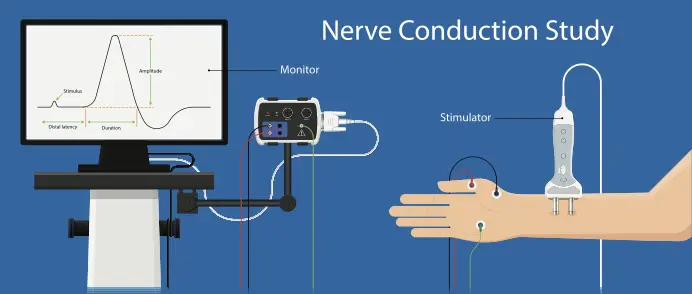Adsons Test
Purpose
- The purpose of the Adson’s Test Adson’s test is a provocative test for Thoracic Outlet Syndrome that looks for tightened anterior and middle scalene muscles or cervical rib compression of the subclavian artery.
Technique
- Starting position
- The patient can be tested while seated or standing, with their elbow fully extended. Procedure
The patient’s arm is abducted 30 degrees at the shoulder and extended to its maximum length. - A patient’s wrist is grasped by an examiner as a radial pulse is felt.
The patient then broadens the neck and turns the head toward the suggestive shoulder and is approached to take a full breath and hold it. - A quality of a radial pulse is compared to a quality of an arm resting at a patient’s side while the whole procedure.
In the modified test, some doctors may tell the patients to turn their heads away from a side being tested. - Positive Test
The positive test is one in which a radial pulse significantly diminishes or even disappears. In order to find out a patient’s normal pulse, this is essential to check a patient’s radial pulse on an opposite arm. - A non-symptomatic side may be compared to a positive side.
FAQs
A provocative test for thoracic outlet syndrome, Adson’s test involves either cervical rib compression of the subclavian artery or tightened anterior and middle scalene muscles.
What is the pulse test for thoracic outlet syndrome? The Adson, Eden, and Wright tests are specialized orthopedic assessment tests.
The hand artery patency test was performed at the bedside prior to arterial puncture. While the examiner applies digital occlusive pressure to the wrist’s radial and ulnar arteries, the patient raises their hand and repeatedly makes a fist. The hand will lose its generally expected pink tone.
Thoracic outlet syndrome can be broken down into three main categories:
Thoracic outlet syndrome is neurogenic (neurologic). The brachial plexus is compressed in this most common form of thoracic outlet syndrome.
Syndrome of the venous thoracic outlet.
Syndrome of the arterial thoracic outlet.
A sign that thoracic outlet syndrome is present: is the extinction of your radial pulse. Take a seat. Your aid finds your radial pulse once more. As you lift your chest into an exaggerated “at attention” position, the helper pushes your shoulder down and pulls your arm back a little.








One Comment